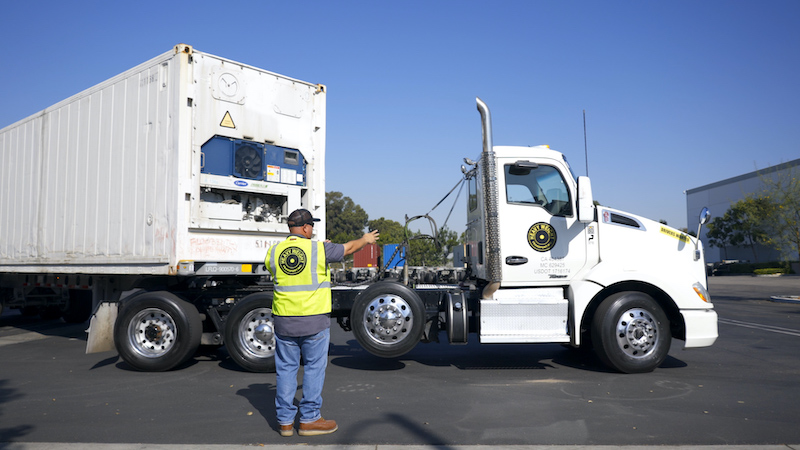Choosing the Right Drayage Carrier: An Expert’s Guide
Selecting the right drayage carrier is a pivotal decision for any business that relies on efficient, reliable, and cost-effective movement of freight between ports, rail yards, and final destinations. In today’s competitive logistics landscape, making an informed choice can directly impact your supply chain’s performance, cost control, and customer satisfaction.
Heavy Weight Transport provides a comprehensive guide to help you navigate the process and choose a drayage partner that aligns with your operational needs and business goals.
Understand Your Drayage Needs
Before evaluating potential drayage carriers, you need to clearly define your company’s requirements:
- Container Types and Volume: Identify the types of containers you typically ship and your average shipment volume. Specialized containers or oversized loads may require carriers with specific equipment or expertise.
- Service Frequency and Speed: Determine how often you need drayage services and whether you require expedited or time-sensitive deliveries.
- Additional Services: Consider if you’ll need related solutions such as transloading, cross-docking, storage, or final-mile delivery. A carrier offering integrated services can streamline your logistics and reduce handoffs.
Evaluate Safety and Regulatory Compliance
Safety and compliance are non-negotiable in drayage operations:
- Driver Credentials: Ensure carriers employ drivers rated by the Federal Motor Carrier Safety Administration (FMCSA) and possess Transportation Worker Identification Credentials (TWIC).
- Regulatory Adherence: Verify that the carrier complies with all relevant federal, state, and local regulations, including environmental and safety standards. Non-compliance can lead to fines, shipment delays, and restricted port access.
- Safety Record: Review the carrier’s safety scores, certifications, and history of violations to gauge their operational standards and commitment to safe practices.
Assess Experience and Reputation
A carrier’s track record is a strong predictor of future performance:
- Industry Experience: Established carriers are more likely to have robust relationships with port authorities and a deep understanding of complex logistics regulations.
- On-Time Performance: Consistent on-time delivery is essential. Analyze the carrier’s history for reliability and efficiency.
- Customer Reviews: Seek feedback from current or past clients, and check industry ratings to ensure the carrier has a reputation for excellence and problem-solving.
Inspect Fleet Quality and Equipment Availability
The quality and availability of a carrier’s fleet can make or break your drayage operation:
- Modern, Well-Maintained Fleet: A reliable carrier should have a fleet capable of handling your cargo safely and efficiently.
- Chassis and Equipment Ownership: Asset-based fleet carriers are companies that own their chassis and specialized equipment. They offer greater flexibility and reduce the risk of delays due to equipment shortages, which are common at busy ports.
- Volume Flexibility: Ensure the carrier can scale its services to match your fluctuating shipment volumes.
Asset-based carriers are generally a reliable option when it comes to shipping. They tend to provide higher standards of quality and service, as well as intermodal shipping support.
Prioritize Technology Integration
Advanced technology enhances transparency, efficiency, and communication:
- Real-Time Tracking: Look for carriers that provide real-time shipment tracking and status updates, allowing you to monitor cargo and respond proactively to any issues.
- Efficient Communication Tools: Technology-enabled communication ensures you’re always informed about your shipment’s status and any changes in scheduling or routing.
- Data Availability: Carriers should be able to quickly provide proof of delivery, appointment confirmations, and other critical data points.
Consider Network Reach and Customer Service
A carrier’s network and customer support can significantly affect your logistics:
- Geographic Coverage: Choose a carrier with a robust network and multiple service hubs, enabling them to reroute cargo and maintain timely deliveries even when disruptions occur. Heavy Weight Transport provides services at all major ports throughout the U.S., allowing us to be wherever and whenever you need us.
- Dedicated Account Management: Personalized service from experienced account managers can help you navigate complex logistics needs and resolve issues quickly.
- Responsive Customer Service: Prompt, clear communication is essential for addressing concerns and ensuring smooth operations.
Compare Costs—But Don’t Sacrifice Quality
While cost is a key factor, the cheapest option isn’t always the best:
- Transparent Pricing: Obtain multiple quotes and ensure you understand all potential fees, including accessorial charges for waiting time, chassis use, or customs inspections. Heavy Weight Transport provides an easy way to get a rapid custom drayage quote.
- Value Over Price: Weigh the carrier’s service quality, reliability, and additional benefits against their rates to determine the best overall value for your business.
Choosing Your Drayage Carrier
Choosing the right drayage carrier is more than just moving containers from point A to point B. It’s about building a partnership with a company that values safety, compliance, transparency, and customer service as much as you do. By carefully assessing your needs and evaluating providers across these critical criteria, you’ll position your business for smoother operations, fewer disruptions, and greater long-term success in your supply chain.
If you’re ready to optimize your drayage strategy, start by outlining your requirements and reaching out to reputable carriers for detailed discussions and quotes. The right partner will not only deliver your cargo — they’ll deliver peace of mind.
At Heavy Weight Transport, we pride ourselves on providing the best drayage services for our customers to ensure their cargo is delivered efficiently and safely.









